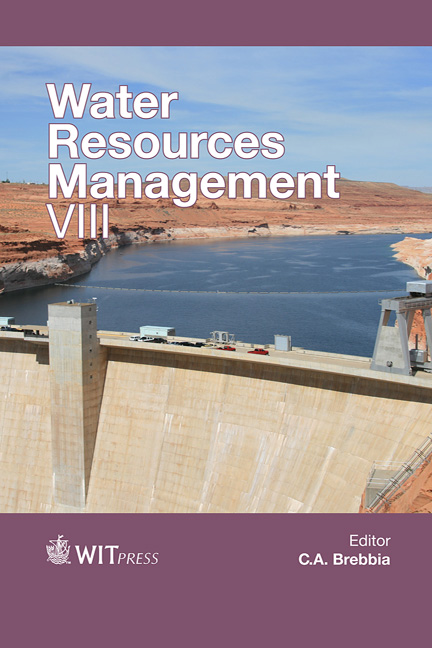Seasonal Variation Of The Surface Water Quality Of Two Dams In Plateau State, North Central Nigeria
Price
Free (open access)
Transaction
Volume
196
Pages
8
Page Range
291 - 298
Published
2015
Size
362 kb
Paper DOI
10.2495/WRM150251
Copyright
WIT Press
Author(s)
J. J. Gongden, Y. N. Lohdip
Abstract
Surface water is very vulnerable to pollution due to its ease of accessibility to human and animals, runoff from farmlands and other anthropogenic contaminations. It is one thing to have water within one’s reach, and another to have it potable for use. This paper reports the seasonal variation and implication of the quality status of two surface dams located in some water-stressed communities of Plateau State, North Central Nigeria. Water quality assessments were carried out for a period of six seasons (August 2009–April 2012) using standard analytical methods. Seasonal variation of the water quality showed increasing and decreasing metal ion concentration in the dry and wet seasons, respectively, except for copper, which had a reverse trend. Seasonal values showed that most of the metals had values above their respective WHO standards for drinking water. For average concentrations, Mabudi dam had higher values of lead (0.53±0.02)mg/l, arsenic (0.08±0.001)mg/l, cobalt (0.11±0.001)mg/l and nickel (0.36±0.02)mg/l in the dry season than Wubang dam. Wubang dam recorded higher cadmium (0.80±0.001)mg/l and aluminium (1.79±0.001)mg/l values with no mercury detected throughout the period of study. Other physicochemical parameters also vary between the seasons with most of the values (for turbidity, colour, suspended and total dissolved solids) exceeding their maximum tolerable limits for both seasons. The water in both seasons had high microbial loads, with the dry season being higher. Biochemical tests on the isolates showed the presence of Staphylococcus aureus, Escherichia coli, Proteus spp. Bacillus spp. Salmonella spp. Enterobacterea, Pseudomonas spp. and Shigella, most of whose counts were higher during the dry season. Being the only sources of water for both domestic and agricultural uses in these communities, there is an urgent need for government and non-governmental organizations to address the water situation in the communities in order to curtail the outbreak of water-related diseases, which has already affected some families based on the kind of cases being attended to within the period by the Primary Health Care Clinic in one community. Our research group is embarking on cost-effective purification methods towards alleviating the situation, as well as rain water harvesting initiatives.
Keywords
physicochemical, microbiological variations, surface water





